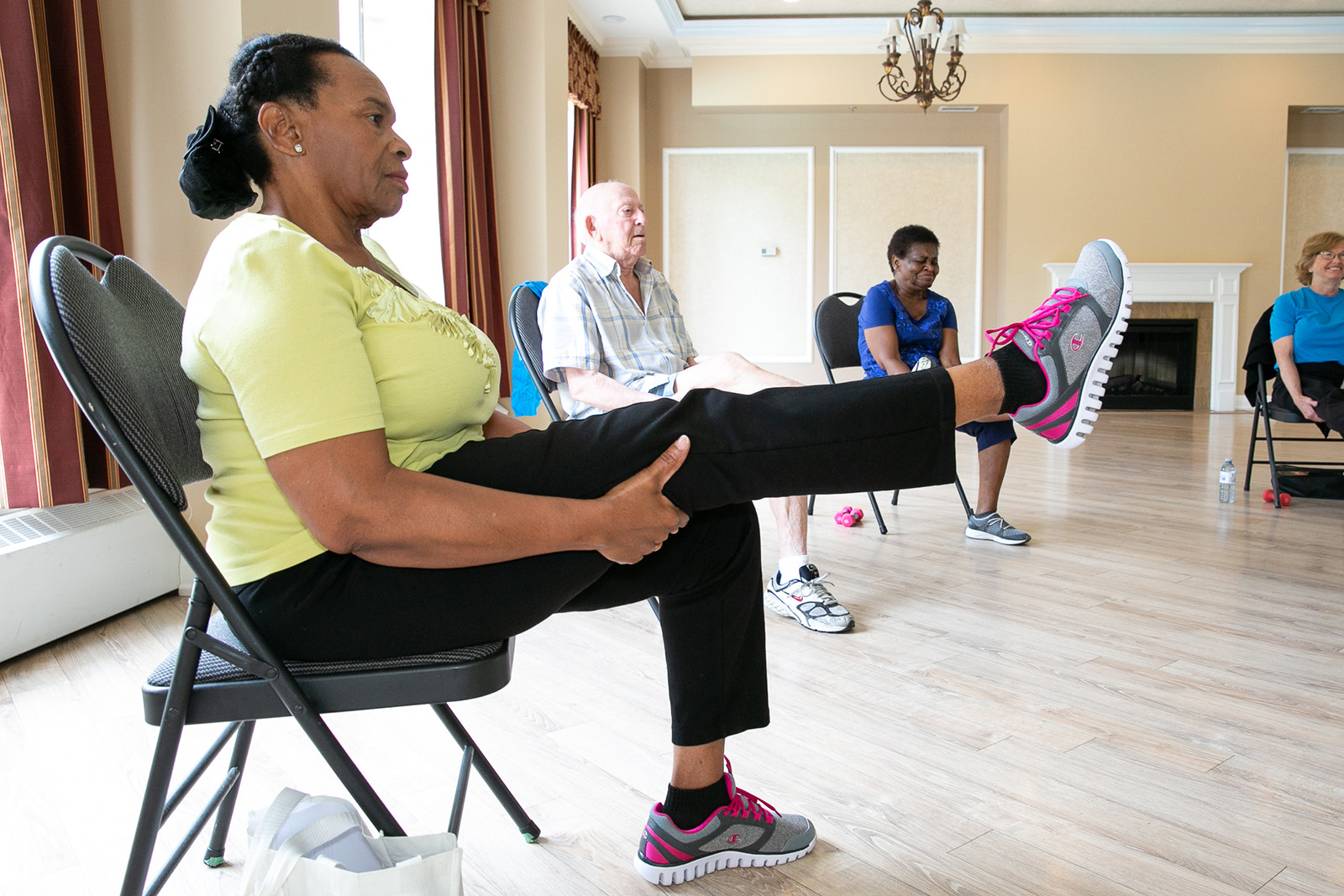- centre@esthersplacegh.com
- (+233) 050 572 1405
- Opening : Mon-Fri 09:00 - 18:00
Blog Update

DOES EXERCISE HELP PREVENT FALLS IN OLDER ADULTS?
Someone asking “does exercise prevent/treat conditions associated with old age?” is synonymous to asking “does medication prevent/treat diseases associated with aging?” The answer only makes sense when exercise is described as a modality, with dosage, how long you are exposed to it, complying with the prescription, and tailored exercise for each condition, in this case being falls (Singh, 2002).
WHAT CAUSES FALLS IN OLDER ADULTS?
Falls are defined as accidental events in which a person’s center of gravity is lost and his/her effort to restore balance is ineffective eventually dropping to the ground (Ungar et al, 2013)
The cause could be a related to visual impairment(partial or total blindness), syncope (dizziness), cognitive impairment, heightened brain activity(seizures), a stroke, a loss of consciousness, muscle loss/weakness(from aging, disuse atrophy), or non-contestable forces. The pathogenesis of falls is often from different factors, due to physiological age-related changes or more properly pathological factors, or due to the environment. The identification of risk factors is essential in the planning of preventive measures.
Many older people have a variety of adverse psychosocial difficulties related to falling, including fear, anxiety, loss of confidence, and impaired perception of ability to walk safely without falling. The umbrella term for these problems is “fear of falling,” and this is found in around half of community dwelling older people who fall and in up to half of those who have never fallen. Consequences include avoidance of activity, social isolation, and increasing frailty and risk of further falls independent of physical impairment.
DO PREVIOUS FALL PREVENT YOU FROM EXERCISE AND PHYSICAL ACTIVITY?
Although fear of falling is common and affects many older people who have had a history of fall, understanding of its management is limited. Some research support the use of physical activity to manage the fear of falling, and recent studies supports the use of psychological therapies as well.
When it comes to exercises, many older people who have fallen before have a variety of psychosocial difficulties related to falling, including fear, anxiety, lack of confidence, and impaired perception of ability to walk safely without falling. However these does not prevent one from engaging in physical activity. Avoidance of physical activity can lead to and increasing frailty and risk of further falls independent of physical impairment.
A history of falling have a visible impact on how older people walk. An experiment of older people undergoing gait and balance studies on elevated walkways show disproportionately slow walking speeds and other dysfunctional gait adjustments, alongside abnormalities in postural balance compared with younger subjects. Such experimental data and the observation of higher risk of falls and increasing physical frailty in fear of falling suggest that physical therapy is important in managing falls.
At Esthers Place, we are committed to providing our clients with the highest quality care and support.
WhatsApp Us